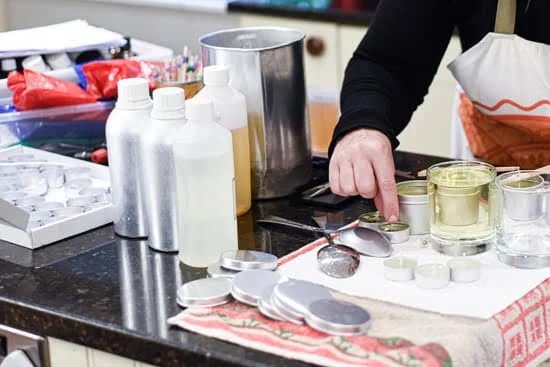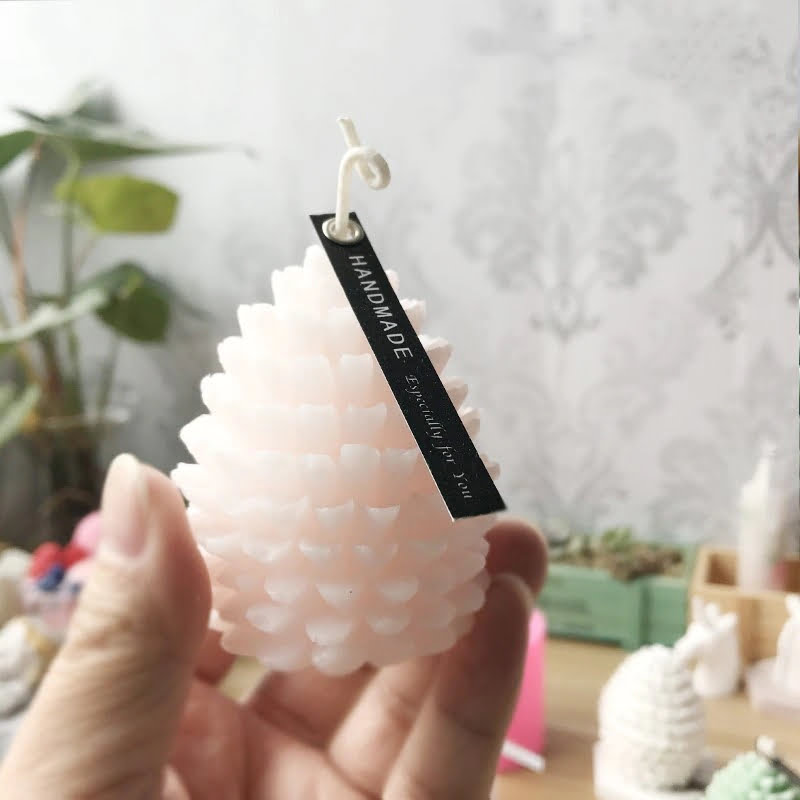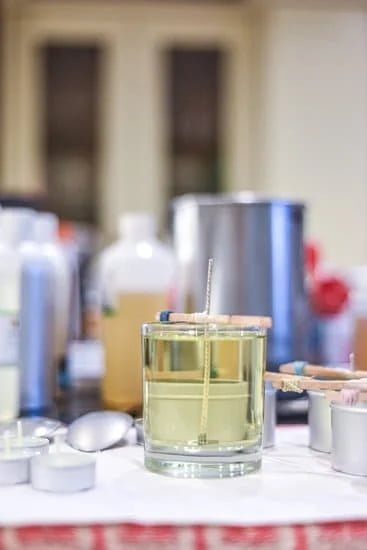Candle making is not just about pouring melted wax into a mold and adding a wick. The type of wax used plays a crucial role in the overall quality, performance, and appearance of the final product.
In fact, choosing the right wax is one of the most important decisions that candle makers have to make. Whether you’re a seasoned candle maker or just starting out on your DIY candle journey, understanding the different types of wax available and their unique characteristics is essential.
The selection of wax has a significant impact on various aspects of candle making. Not only does it affect how well the candle burns and how long it lasts, but it also influences its scent throw, texture, and even its eco-friendliness. Different types of waxes have distinct properties that contribute to these factors, making it crucial for candle makers to select their wax wisely.
With so many options available in today’s market, it can be overwhelming to determine which wax is best suited for your candles. Each type has its own advantages and disadvantages, catering to different preferences and needs. Therefore, taking the time to understand the characteristics and benefits of each type is key in creating candles that are not only visually appealing but also meet your desired performance expectations.
In this article, we will explore some of the most popular options for candle making wax including soy wax, paraffin wax, beeswax, palm wax, coconut wax, and blended waxes. We will delve into each type’s unique qualities as well as their advantages in terms of fragrance retention, burn time, sustainability, and overall appearance.
By examining these factors more closely, you’ll be able to make an informed decision when selecting the best type of wax for your candles. So let’s dive in and discover what type of wax is truly best for you.
Soy Wax
Soy wax is a popular choice among candle makers for its natural and eco-friendly qualities. Derived from soybean oil, soy wax offers several advantages over other types of waxes.
One of the key benefits of using soy wax is its sustainability. Soybeans are a renewable resource, making soy wax an environmentally friendly option. Unlike paraffin wax, which is derived from petroleum, soy wax is biodegradable and produces less soot when burned. This not only reduces the carbon footprint but also makes it easier to clean the candle holder or surrounding surfaces.
In addition to being sustainable, soy wax candles also offer superior performance. Soy wax has a lower melting point compared to other waxes, which means that it burns at a cooler temperature. This results in a longer burn time as the candle can melt at a slower pace, making it more cost-effective for consumers. Moreover, the lower burning temperature allows for better fragrance retention, giving soy wax candles a stronger and more long-lasting scent throw.
| Soy Wax: The Natural and Eco-Friendly Option |
|---|
| – Derived from soybean oil |
| – Sustainable and biodegradable |
| – Burns at a lower temperature |
| – Longer burn time |
| – Stronger fragrance retention |
Overall, choosing soy wax for candle making not only contributes to a greener environment but also ensures high-quality candles with long-lasting fragrances. Whether you are making candles for personal use or selling them as part of your business, soy wax is an excellent natural option that provides both eco-consciousness and performance.
Paraffin Wax
Paraffin wax has long been a staple in the candle making industry due to its excellent scent throw capabilities. Derived from petroleum, paraffin wax is known for its ability to hold and release fragrance effectively, making it a popular choice for those who prioritize strong and long-lasting aromas in their candles.
One of the main advantages of using paraffin wax in candle making is its ability to create a powerful scent throw. Scent throw refers to the distance at which a candle’s fragrance can be detected.
Paraffin wax has a high melting point, which allows it to burn slowly and evenly, releasing fragrance molecules into the air over an extended period. This slow-burning characteristic not only enhances the longevity of scented candles but also ensures that their aromas are consistently present throughout the entire burn time.
Additionally, paraffin wax is highly versatile when it comes to incorporating fragrances. It has a great affinity for holding scents, allowing candle makers to add a wide range of fragrances and achieve strong and true-to-life aromas in their candles. Whether you prefer floral, fruity, or musky scents, paraffin wax can accommodate various types of fragrances without compromising their intensity.
It’s important to note that while many people favor paraffin wax for its fragrance qualities, it does have some drawbacks. As paraffin is derived from petroleum, some may consider it less eco-friendly compared to other options like soy or beeswax. Additionally, burning paraffin candles may produce soot or black smoke if not properly trimmed and maintained. However, advancements in the formulation of paraffin waxes have resulted in low-soot varieties that minimize these issues.
Overall, if you prioritize powerful scents and versatility in your candle making endeavors, paraffin wax remains a classic choice that continues to deliver excellent results. Its ability to hold and release fragrance effectively, combined with its wide availability and affordability, make it a go-to option for many candle makers and enthusiasts alike.
Beeswax
Introduction to Beeswax
Beeswax, as the name suggests, is a type of wax produced by honeybees. It is a natural and renewable resource that has been used for centuries in various applications, including candle making. Beeswax candles have a rich history dating back to ancient civilizations where they were prized for their beauty and symbolism.
The Benefits of Using Beeswax in Candle Making
One of the main advantages of using beeswax in candle making is its unique properties. Beeswax has a higher melting point compared to other waxes, which means that it can withstand higher temperatures without melting or dripping. This makes beeswax candles less likely to create a mess during burning.
In addition to its practical benefits, beeswax also offers aesthetic advantages. Beeswax candles have a warm and natural golden color that adds an elegant touch to any space. Their subtle sweet aroma adds another layer of sophistication, making them popular choices for luxury or high-end candles.
Enhanced Durability and Luxuriousness
Beeswax candles are known for their long burn times due to the density of the wax. They tend to burn at a slower rate than other types of candles, allowing you to enjoy their warm glow and soothing ambiance for extended periods. This longevity makes them excellent investments for those looking for long-lasting candles or special occasion pieces.
Furthermore, beeswax has excellent temperature control properties. It emits negative ions when burned, which helps neutralize pollutants in the air such as dust, pollen, and mold spores. This purifying effect contributes to better indoor air quality and creates a healthier environment.
Overall, beeswax offers candle makers and consumers an exceptional option for creating luxurious and long-lasting candles. Its unique characteristics make it stand out among other wax choices in terms of durability, aesthetics, and air purifying qualities. Whether you are looking to create an indulgent centerpiece for a special occasion or simply enjoy the benefits of a high-quality candle, beeswax is a fantastic choice.
Palm Wax
Palm wax is a sustainable and unique option for candle making. Derived from the oil of palm trees, palm wax offers several advantages and features that set it apart from other types of wax. This section will delve into the sustainability of palm wax, its unique properties, and how it contributes to the visual appeal and texture of candles.
One major advantage of palm wax is its sustainability. Palm trees are highly renewable resources that grow abundantly in regions such as Southeast Asia, Africa, and Latin America. These trees can be harvested without causing significant harm to the environment or depleting natural resources. Furthermore, palm tree plantations have been known to protect biodiversity in certain regions by providing habitats for various species.
In addition to its sustainable nature, palm wax also possesses unique features that make it a desirable choice for candle making. One notable characteristic is its natural crystalline structure, which gives candles made with palm wax an attractive marble-like appearance when solidified. This adds a touch of elegance and uniqueness to the finished products. Moreover, palm wax has a higher melting point compared to other waxes, resulting in candles with a longer burning time and enhanced durability.
Aside from its sustainability and unique qualities, palm wax contributes significantly to the visual appeal and texture of candles. Palm wax has excellent mold release properties, meaning that it can easily be poured into intricate molds without sticking or breaking upon removal. This allows for creativity in candle designs and enables artisans to create stunning and intricate shapes with ease. Additionally, candles made with palm wax have a smooth and creamy texture that adds to their overall aesthetic appeal.
Coconut Wax
Coconut wax, derived from the meat of coconuts, has gained popularity as an eco-conscious and clean-burning alternative in candle making. This natural wax is produced through a process of hydrogenation, which removes impurities and creates a smooth and creamy substance that is ideal for creating high-quality candles.
One of the primary advantages of using coconut wax is its eco-friendly nature. Coconut trees are highly sustainable and grow abundantly in tropical regions, making coconut wax a renewable resource. Additionally, the production process for coconut wax is more environmentally-friendly compared to other waxes, as it does not involve chemicals or pesticides.
In terms of performance, candles made with coconut wax offer a clean-burning experience. When used in conjunction with quality wicks, coconut wax candles produce minimal soot and smoke during burning, ensuring a healthier indoor air quality. The low melting point of coconut wax also contributes to the clean burn by preventing excessive heat that can cause tunneling or uneven melting.
Moreover, candles made with coconut wax have a luxurious appearance and texture. Coconut wax has a beautiful ivory color that adds elegance to the finished product. It also has excellent fragrance retention capabilities, allowing scents to be released evenly throughout the candle’s burn time.
Overall, coconut wax offers an attractive option for those seeking an eco-conscious and clean-burning alternative in candle making. Its sustainability, low soot emissions, and luxurious appearance make it a versatile choice for both personal use and commercial production.
| Advantages | Benefits |
|---|---|
| Eco-friendly | Renewable resource |
| Clean-burning | Minimal soot and smoke |
| Luxurious appearance and texture | Excellent fragrance retention |
Blended Waxes
Blended waxes have gained popularity in the candle making industry due to their ability to enhance performance and versatility. Blended waxes, as the name suggests, are a combination of different types of wax, often including soy wax, paraffin wax, beeswax, palm wax, or coconut wax. By blending different waxes together, candle makers can create a customized wax that meets their specific needs and preferences.
One of the main advantages of using blended waxes is increased performance. Blended waxes often combine the best qualities of different types of wax to create a superior product. For example, a blend of soy and paraffin wax may offer the clean-burning properties of soy wax while also providing excellent scent throw from the paraffin wax. This combination can result in candles that burn evenly and emit a strong fragrance throughout the room.
In addition to enhanced performance, blended waxes also offer versatility in candle making. Candle makers can experiment with different combinations of waxes to create unique textures, colors, and appearances for their candles. By combining waxes with varying melting points and characteristics, it is possible to achieve specific effects such as marbling or layering in the finished candles. This allows for greater creativity and customization in candle making.
Overall, blended waxes provide candle makers with the opportunity to optimize both performance and versatility in their creations. Whether it’s achieving a specific scent throw or creating visually appealing candles with unique textures, blended waxes offer an array of options for creative expression. By experimenting with different combinations and ratios of various waxes, candle makers can find their perfect blend that meets both their artistic vision and functional requirements.
Factors to Consider When Choosing the Best Wax for Your Candles
When it comes to candle making, choosing the right wax is crucial for achieving optimal results. There are several factors to consider when selecting the best wax for your candles. These factors include temperature requirements and melting points, fragrance retention and scent throw, as well as preferred burn time and candle appearance.
Temperature Requirements and Melting Points
The first factor to consider when choosing the best wax for your candles is the temperature requirements and melting points. Different types of waxes have different melting points, which can affect how the candle burns and performs. It is important to select a wax that has a melting point suitable for your desired candle-making process.
For example, soy wax typically has a lower melting point compared to other waxes, making it easier to work with for beginners or those who prefer lower heat temperatures. On the other hand, paraffin wax has a higher melting point, which may require higher temperatures during the pouring process. Understanding the temperature requirements and melting points of various waxes will help you determine which one is best suited for your specific needs.
Fragrance Retention and Scent Throw
Another important factor to consider when choosing the best wax for your candles is fragrance retention and scent throw. Some waxes have better abilities than others in holding onto fragrance oils, resulting in stronger scents when the candle is burned.
Paraffin wax is well-known for its excellent scent throw capabilities. This means that it can release a strong aroma when lit, filling the room with fragrance. On the other hand, soy wax may have less scent throw but offers a cleaner and more natural scent experience. Consider whether you want a strong aroma or a more subtle fragrance when selecting your wax.
Preferred Burn Time and Candle Appearance
Lastly, consider your preferred burn time and candle appearance when choosing the best wax for your candles. Some waxes burn longer than others, providing an extended burn time for your candles. This can be an important factor for those who want to enjoy their candles for a longer period without having to replace them frequently.
Additionally, different waxes produce different visual effects when the candle is burned. For example, palm wax creates a beautiful crystalline appearance as it cools, while beeswax has a natural golden hue that adds a touch of luxury to any candle. Consider the desired burn time and appearance of your candles to ensure you select the best wax that aligns with your preferences.
By considering these factors – temperature requirements and melting points, fragrance retention and scent throw, as well as preferred burn time and candle appearance – you will be able to choose the best wax for your candles that meets your specific needs and preferences. Remember that experimenting with different types of waxes can lead to discovering new possibilities and ultimately finding your perfect wax for successful candle making.
Conclusion
In conclusion, the type of wax you choose for candle making plays a crucial role in the final outcome of your candles. Each wax option, whether it be soy wax, paraffin wax, beeswax, palm wax, or coconut wax, has its own unique qualities and advantages. It is important to consider factors such as sustainability, fragrance capabilities, burn time, and overall appearance when making your selection.
Soy wax stands out as a natural and eco-friendly option that enhances the quality of candles while being environmentally conscious. Paraffin wax offers excellent scent throw and is widely popular in the candle making industry. Beeswax provides a luxurious and long-lasting option that adds durability and a touch of luxury to your candles.
Palm wax contributes to the visual appeal and texture of candles while also being sustainable. Coconut wax is an eco-conscious choice with clean-burning qualities and a smooth creamy texture.
Blended waxes offer increased performance and versatility by combining different types of waxes to achieve customized results. When selecting your ideal wax for candle making, it is essential to consider factors such as temperature requirements, fragrance retention, scent throw, burn time preference, and desired candle appearance.
In summary, choosing the best wax for your candles requires experimentation and finding what works best for your specific needs. The options discussed in this article offer a range of advantages and qualities that can enhance the overall quality of your candles. As you embark on your candle making journey, remember the importance of selecting the right wax to ensure successful results every time.
Frequently Asked Questions
What is the healthiest wax for candles?
Beeswax is often considered the healthiest wax for making candles. It is a natural substance produced by bees and has several benefits over other types of wax. Beeswax candles are known to burn cleaner and produce less soot and smoke compared to candles made from other waxes.
They also emit a warm, natural scent that can be soothing and relaxing. Additionally, beeswax is believed to have air purifying properties as it releases negative ions when burned, which can help improve indoor air quality.
Which wax is better for making candles?
The choice of wax for making candles ultimately depends on the specific preferences and requirements of the candle maker. There are various types of waxes available, including soy wax, paraffin wax, beeswax, coconut wax, and more. Each type has its own unique characteristics and advantages.
For example, soy wax is popular due to its renewable and sustainable nature, while paraffin wax offers excellent scent throw and color options. Beeswax provides a natural option with clean burning qualities. Ultimately, the best wax for making candles will depend on factors such as desired aesthetics, burning qualities, availability, cost, and personal preference.
What is the best wax for beginner candle makers?
Soy wax is often recommended as the best wax for beginner candle makers due to its ease of use and forgiving nature. It has a lower melting point compared to some other waxes, making it easier to handle during the candle-making process. Soy wax also has good scent throw capabilities and excellent glass adhesion properties when used in containers or jars.
Another advantage for beginners is that soy wax cleans up easily with soap and water if any spills or mistakes occur during the candle-making process. Overall, soy wax provides a reliable starting point for those new to candle making before venturing into experimenting with other types of waxes.

Welcome to my candle making blog! In this blog, I will be sharing my tips and tricks for making candles. I will also be sharing some of my favorite recipes.





